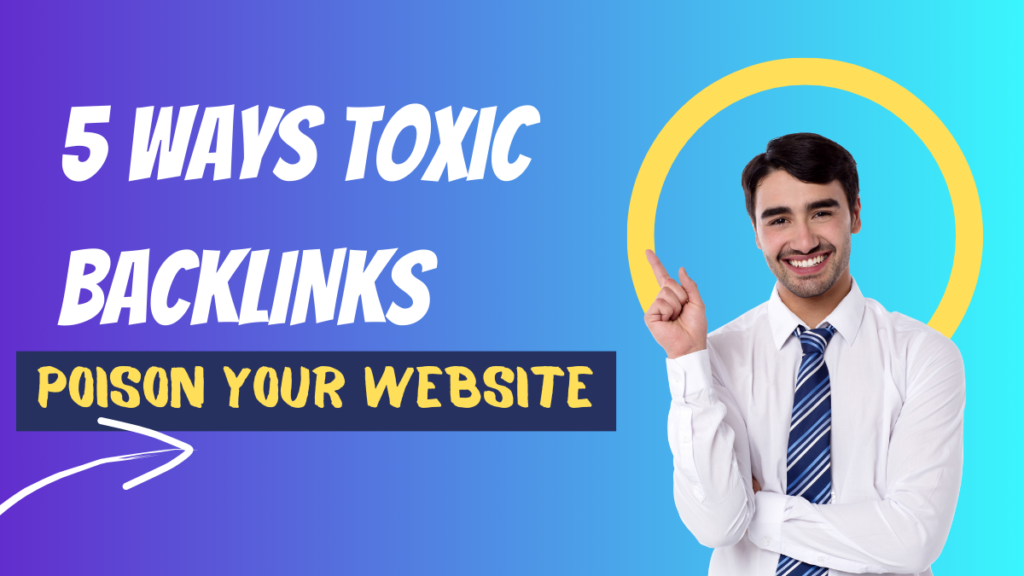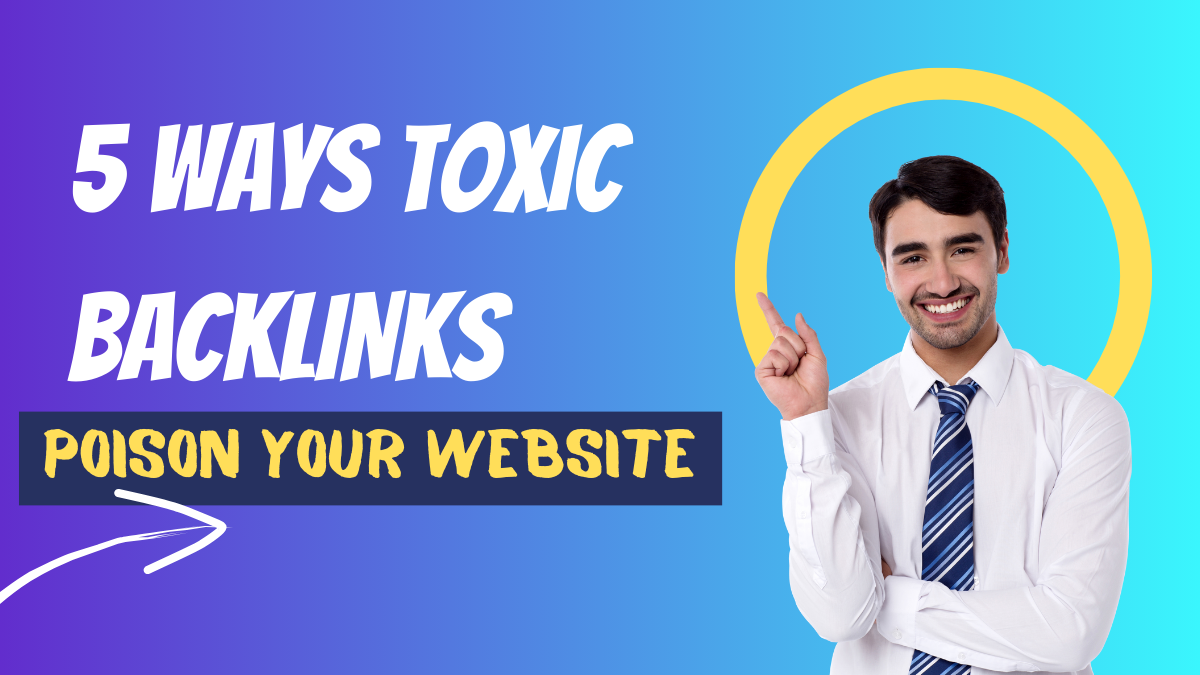Backlinks are the lifeblood of any website trying to rank well in search engines. They’re like votes of confidence from other sites, signaling that your content is valuable and worth checking out. But not all backlinks are created equal. Some may even be downright harmful.
Now, you might be thinking, “How can a simple link be toxic?” Well, let me tell you, it’s not about the link itself, but where it comes from and the intentions behind it. Just like you wouldn’t want to hang out with people who have bad reputations, your website doesn’t want to associate with shady websites either.

What Makes a Backlink Toxic?
Think of toxic backlinks as the internet equivalent of bad company. They come from:
- Spammy or low-quality websites: These sites often have thin content, are filled with ads, or are just plain irrelevant to your niche.
- Websites penalized by Google: These sites have violated Google’s guidelines, and associating with them can tarnish your reputation too.
- Websites created solely for link building: These are artificial sites with the sole purpose of generating backlinks. They offer no real value.
- Websites in irrelevant niches: A backlink from a gardening blog won’t help your tech website, and might even hurt it.
How Toxic Backlinks Harm Your Website
So, why should you care about toxic backlinks? Here are a few ways they can poison your website:
- Lower search engine rankings: Google’s algorithm takes into account the quality of your backlinks. If you have a bunch of toxic backlinks, it can drag down your rankings.
- Penalties from Google: In severe cases, Google might penalize your website if it detects a pattern of unnatural or spammy link building. This can result in a significant drop in traffic.
- Damaged reputation: Associating with low-quality websites can make your site look less trustworthy in the eyes of both search engines and users.
- Wasted crawl budget: Search engine bots have limited time to crawl your site. Toxic backlinks can waste this valuable time, preventing them from indexing your important pages.
- Negative SEO attacks: Competitors might intentionally build toxic backlinks to your site to harm your rankings.
Detoxifying Your Backlink Profile
Don’t panic if you’ve discovered toxic backlinks pointing to your site. You can take steps to detoxify your backlink profile:
- Regularly audit your backlinks: Use tools like Ahrefs, Semrush, or Google Search Console to monitor your backlinks and identify any suspicious ones.
- Reach out to webmasters: If you find a toxic backlink, try contacting the website owner and politely ask them to remove it.
- Disavow toxic backlinks: If you can’t get the links removed, you can use Google’s disavow tool to tell Google to ignore them. But this supposed to be the very last choice.
Real-World Examples
Suppose you are a blogger who writes about eating well. You notice a sudden drop in your rankings and discover a bunch of backlinks from gambling and adult websites. These are clearly toxic and irrelevant to your niche. In this case, you’d want to contact the webmasters and ask for removal or disavow the links if necessary.
Another example: You’re a small business owner and a competitor has launched a negative SEO attack, bombarding your site with spammy backlinks. You’ll need to identify these toxic links and disavow them to protect your rankings.
Prevention is Better Than Cure
The best way to deal with toxic backlinks is to avoid them in the first place. Focus on building high-quality, relevant backlinks through ethical means like:
- Creating amazing content: This will naturally attract backlinks from other websites.
- Guest posting on reputable sites: This can help you build relationships and earn valuable backlinks.
- Engaging in online communities: Share your expertise and connect with other website owners.
Key Takeaways for a Healthy Backlink Profile
Remember, backlinks are essential for SEO success, but quality trumps quantity. Focus on building a strong foundation of high-quality backlinks from relevant websites. Avoid shady link-building tactics and regularly monitor your backlink profile to keep it clean and healthy.
FAQs About Toxic Backlinks
- Can I get penalized for having toxic backlinks? Yes, if Google detects a pattern of unnatural or manipulative link building, it can penalize your website.
- How do I know if a backlink is toxic? Search for backlinks coming from irrelevant, subpar, or spammy domains. Tools like Ahrefs or Semrush can help you identify toxic backlinks.
- Should I disavow all toxic backlinks? Only disavow links that you can’t get removed and that you believe are harming your rankings. Disavowing too many links can also be harmful.
- How long does it take to become free from penalty? Recovery time varies depending on the severity of the penalty and the actions you take to clean up your backlink profile.
- What are some ethical ways to build backlinks? Focus on creating great content, guest posting on reputable sites, and engaging in online communities.
The Bottom Line
Toxic backlinks are a real threat to your website’s health and search engine rankings. By understanding what they are, how they harm your site, and how to detoxify your backlink profile, you can protect your hard-earned SEO progress and ensure your website thrives in the online world. So, don’t let toxic backlinks poison your website – take action today and build a strong, healthy backlink profile that will stand the test of time.



